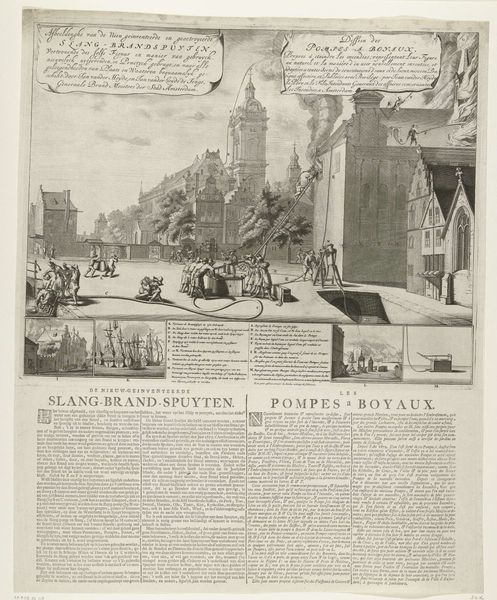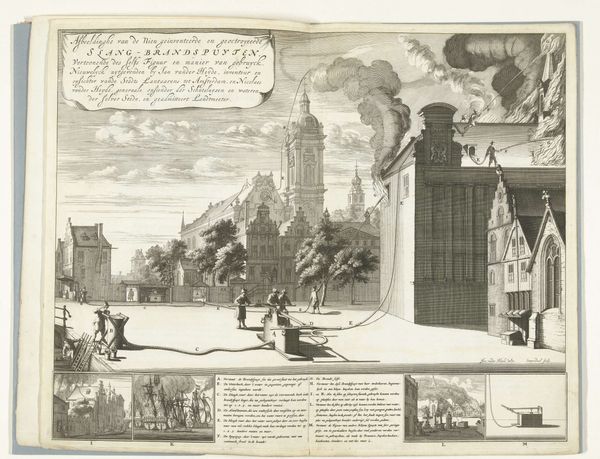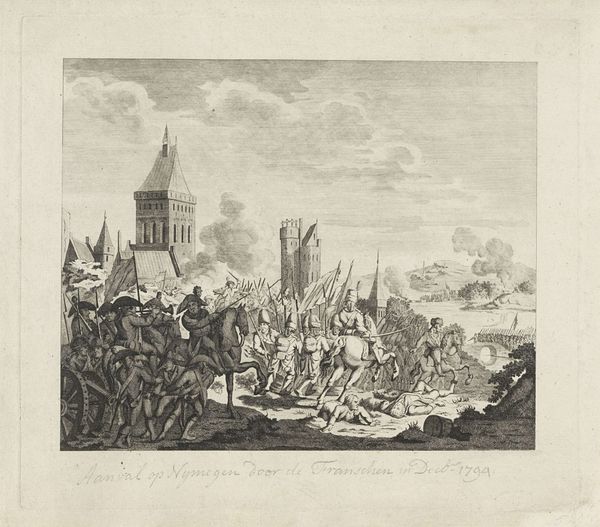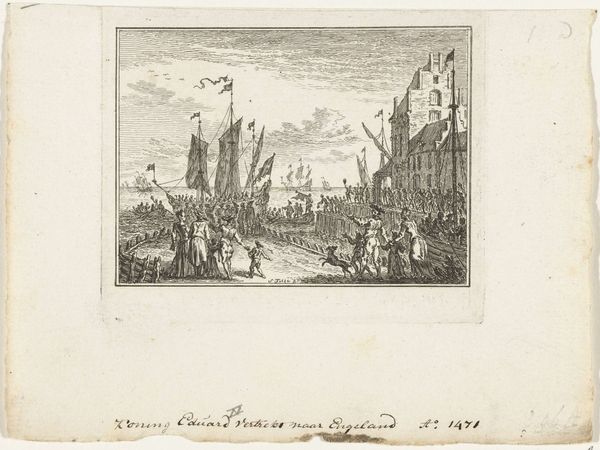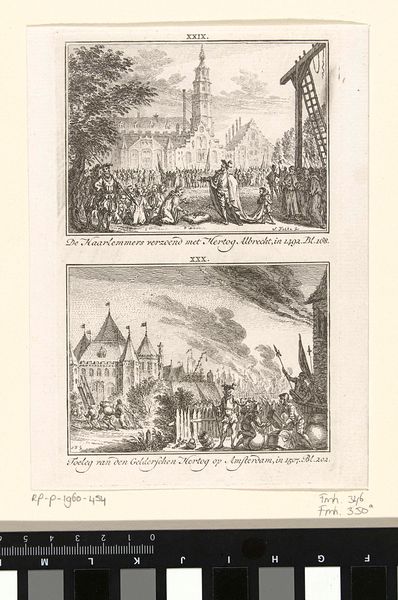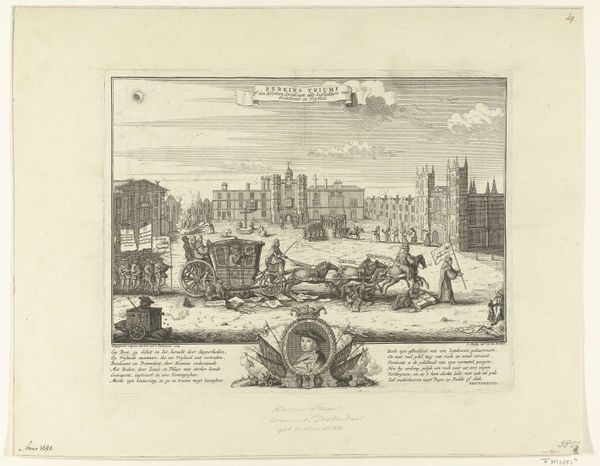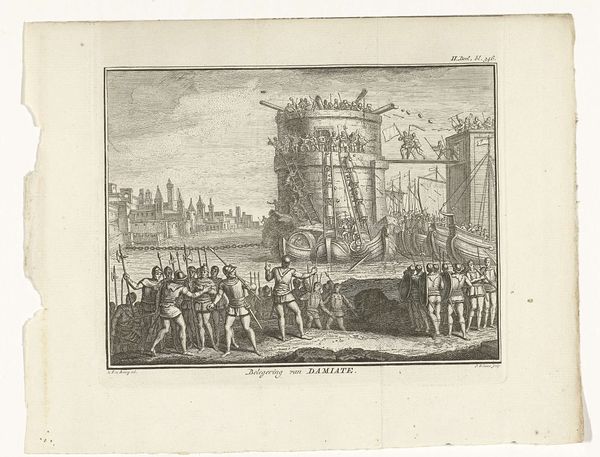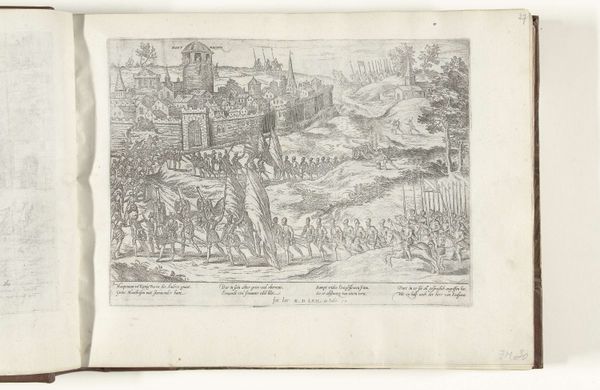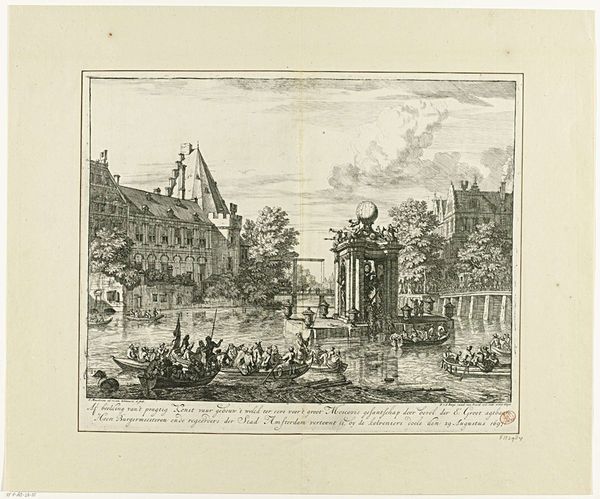
print, etching, engraving
#
narrative-art
#
dutch-golden-age
# print
#
etching
#
line
#
cityscape
#
history-painting
#
engraving
Dimensions: height 365 mm, width 460 mm
Copyright: Rijks Museum: Open Domain
Curator: This print, dating perhaps from 1677, showcases 'Toepassing van de nieuwe brandspuitslangen', which translates to ‘Application of the New Fire Hoses.’ It's held at the Rijksmuseum and created through etching and engraving techniques in a detailed, linear style. Editor: Well, immediately, the stark contrasts in this print evoke a strange mix of cool observation and impending doom, don’t they? It's almost clinical in its depiction of a rather terrifying scenario. Curator: Indeed. Attributed to an anonymous artist, it's an intriguing piece offering a cityscape undergoing a crisis—the early application of firefighting technology during a blaze. There's something inherently hopeful in witnessing this. Editor: It also suggests a moment of innovation and the visualization of progress, an almost mythic element in picturing the salvation of an old Dutch city. Tell me, is it the literal "application" or the idea that captivates? Curator: I lean towards the act itself. Look at the layout, so precise in depicting each stage from water source to nozzle, yet also alive with frantic human activity. The symbolism in those small details can speak volumes! Editor: Symbols like? Curator: Consider the hoses—they snake across the landscape, almost serpentine, implying the potential threat alongside technological mastery. Fire itself is purification but it represents destruction, rebirth… it’s elemental. And all those numbered vignettes at the bottom? I wonder if those serve to dissect the spectacle. Editor: Oh, certainly! Each numbered section anchors the primary narrative, providing smaller "stories" within a "story." So really it breaks down this great chaos to the key components, providing context. Is that not an effort to comprehend disaster? To contain fear itself? Curator: Possibly! We might assume the original audience appreciated clarity and an ordered narrative amidst fear and devastation, though, being so didactic makes one wonder how truly devastating fires in those days were, requiring a sort of pictorial explanation like this one. Editor: Perhaps that controlled, narrative perspective granted them psychological power over the ever-present threat of uncontrollable fire. This feels like a precursor to disaster reportage. Curator: Yes! So looking closer, beyond being an image documenting a new technique, it becomes almost a case study of public consciousness and societal coping mechanisms. It really shows a new sense of urban community taking shape! Editor: A story etched in lines, indeed. What a reminder that even disasters hold hidden messages, don’t they?
Comments
No comments
Be the first to comment and join the conversation on the ultimate creative platform.
